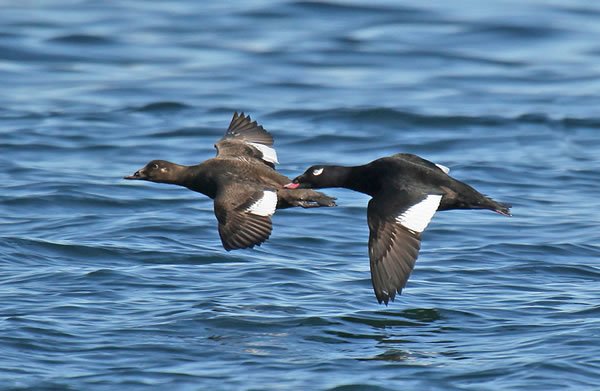Molt ecology of White-winged Scoters in the St. Lawrence estuary

Project Number: 87
Year Funded: 2006
Lead Institution(s): Canadian Wildlife Service
Project Lead: Christine Lepage
Collaborator(s): Jean-Pierre Savard (EC), Jean-Francois Giroux (UQ), Scott Gilliland (CWS)
Location: Quebec
Focal Species: White-winged Scoter (Melanitta delgandi)
Project Description: Management of the eastern population of white-winged scoters is impaired by lack of knowledge on its ecology, distribution, and behaviour. Little is known of the breeding distribution and post breeding ecology in eastern North America. The recent discovery of white-winged scoter molting sites in the St. Lawrence estuary (CWS unpublished data; >4,000 birds) provides a unique opportunity to learn more about the eastern population of White-winged Scoters. Not only this molting population provides an opportunity to learn more about the molt ecology of white-winged scoters, but also a way of getting at movements and harvest location and rates. The major objectives of the study were to determine whether molting white-winged scoters could be captured at their molting sites in the St. Lawrence estuary using techniques developed on the Labrador coast and if so, to obtain blood and feather samples for future genetic and isotopic analysis.
Project Reports:
